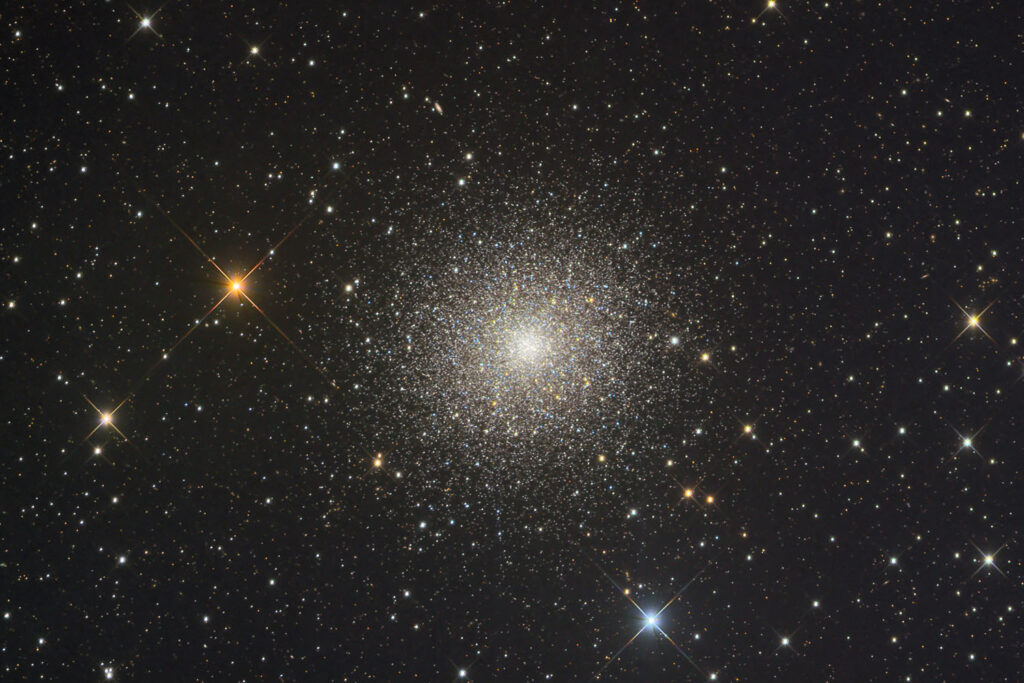Messier 13
Globular Cluster, Hercules
- Description
- Technical
- Links
Messier 13 or M13, also designated NGC 6205 and sometimes called the Great Globular Cluster in Hercules or the Hercules Globular Cluster, is a globular cluster of several hundred thousand stars in the constellation of Hercules.
About 145 light-years in diameter, M13 is composed of several hundred thousand stars, the brightest of which is a red giant, the variable star V11, also known as V1554 Herculis, with an apparent visual magnitude of 11.95. M13 is 22,200–25,000 light-years away from Earth.
Single stars in this globular cluster were first resolved in 1779. Compared to the stars in the neighborhood of the Sun, the stars of the M13 population are more than a hundred times denser. They are so densely packed together that they sometimes collide and produce new stars. The newly formed, young stars, so-called “blue stragglers,” are particularly interesting to astronomers.
The 1974 Arecibo message, which contained encoded information about the human race, DNA, atomic numbers, Earth’s position and other information, was beamed from the Arecibo Observatory radio telescope towards M13 as an experiment in contacting potential extraterrestrial civilizations in the cluster. The cluster will move through space during the transit time; opinions differ as to whether or not the cluster will be in a position to receive the message by the time it arrives.
Telescope: ASA N16 f3.6
Mount: Astro Physics 3600GTO “El Capitan”
Camera: SBIG STL-11000M
Guider: SBIG STL-Internal
L: 15×2 mins = 30 mins, R: 15×2 mins = 30 mins, G: 15×2 mins = 30 mins, B: 15×2 mins = 30 mins
Total Imaging Time: 2h 00m
Data Imaged remotely over 1 night during June 2012.
Data acquisition & Processing by David Churchill.
None

